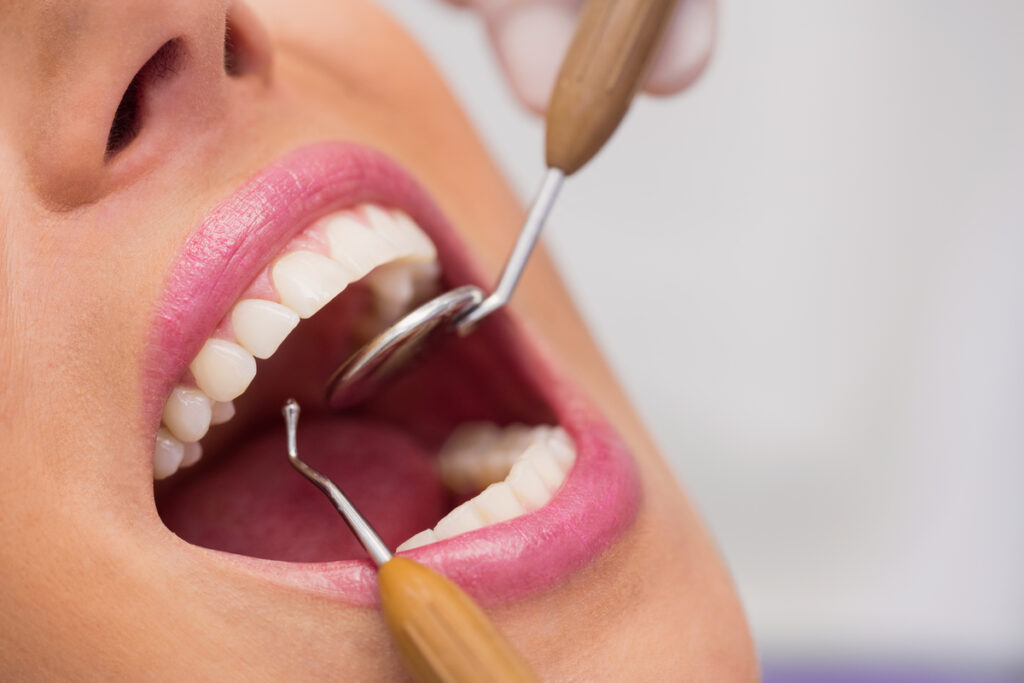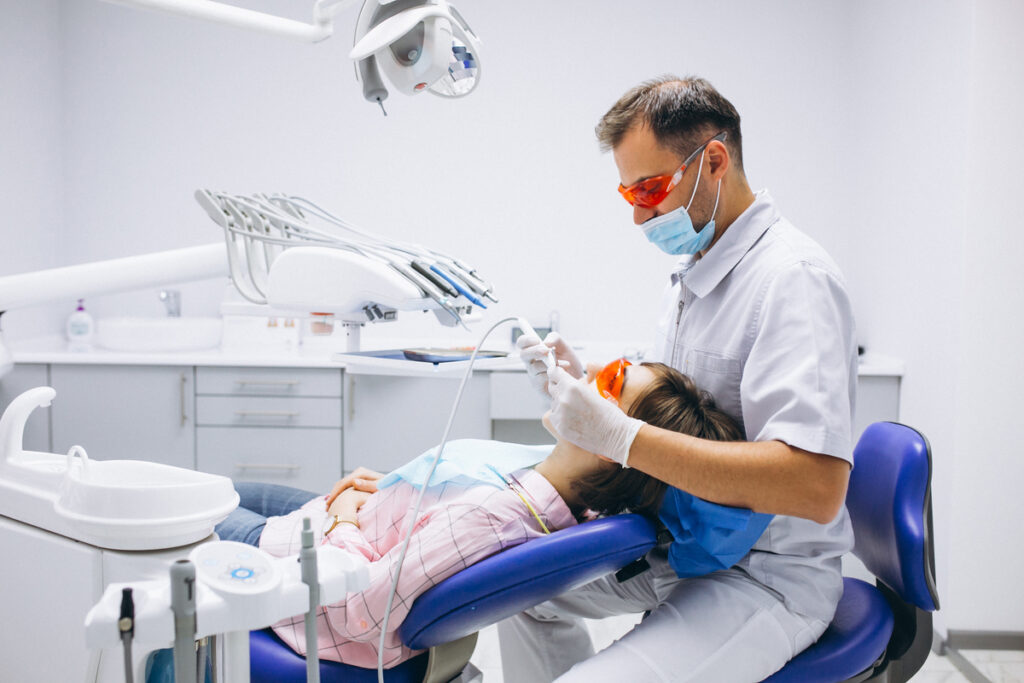What Is An Abutment In Dentistry

Introduction:
Abutment In Dentistry- In the realm of dentistry, the pursuit of restoring oral health and enhancing smiles has led to remarkable advancements in various treatment modalities. One such essential component that plays a crucial role in dental restorations is the dental abutment. An abutment serves as a vital intermediary between a dental implant and a prosthetic tooth, Abutment In Dentistry forming the foundation for a durable and functional dental restoration.
An abutment is a small connector, typically made of metal or ceramic, that is placed on top of a dental implant. Its primary function is to provide stability and support for an artificial tooth, bridge, or denture. Designed to fit precisely onto the implant, the abutment acts as a link between the implant fixture anchored in the jawbone and the visible portion of the prosthetic tooth or restoration.
The selection of an appropriate abutment is crucial as it influences the esthetics, functionality, and long-term success of the dental restoration. Abutments come in various shapes, sizes, and materials, allowing dental professionals to customise them according to the patient’s unique needs. For example, Abutment In Dentistry a custom abutment can be created to match the contour and colour of the patient’s natural teeth, ensuring a seamless integration within the oral cavity.
In addition to providing support, abutments also play a vital role in maintaining the health of the soft tissues surrounding the implant. They help in preserving the proper architecture of the gums, ensuring a natural-looking emergence profile for the prosthetic tooth.
Definition and Purpose
In dentistry, an abutment refers to a crucial component used in dental prosthetics, such as dental bridges, dental implants, and removable partial dentures. It acts as a connector between the natural teeth, dental implants, or implant-supported restorations and the prosthesis that replaces missing teeth. The abutment serves as an intermediary structure that supports the replacement tooth or teeth, providing stability, retention, and functionality.
The primary purpose of an abutment is to create a stable foundation for the dental prosthesis by securely attaching it to the underlying structure. Whether it is a natural tooth or a dental implant, the abutment acts as a link between the oral cavity and the prosthetic restoration. It is designed to withstand biting forces and occlusal stress, ensuring proper distribution of these forces and preventing damage to the surrounding structures.
Moreover, abutments play a vital role in achieving optimal esthetics in dental restorations. They can be customised to match the colour, shape, and contours of the adjacent natural teeth, enhancing the overall appearance of the prosthetic replacement. The abutment also aids in maintaining proper gum contour and supporting soft tissues around the tooth or implant, Abutment In Dentistry promoting oral health and gum stability.
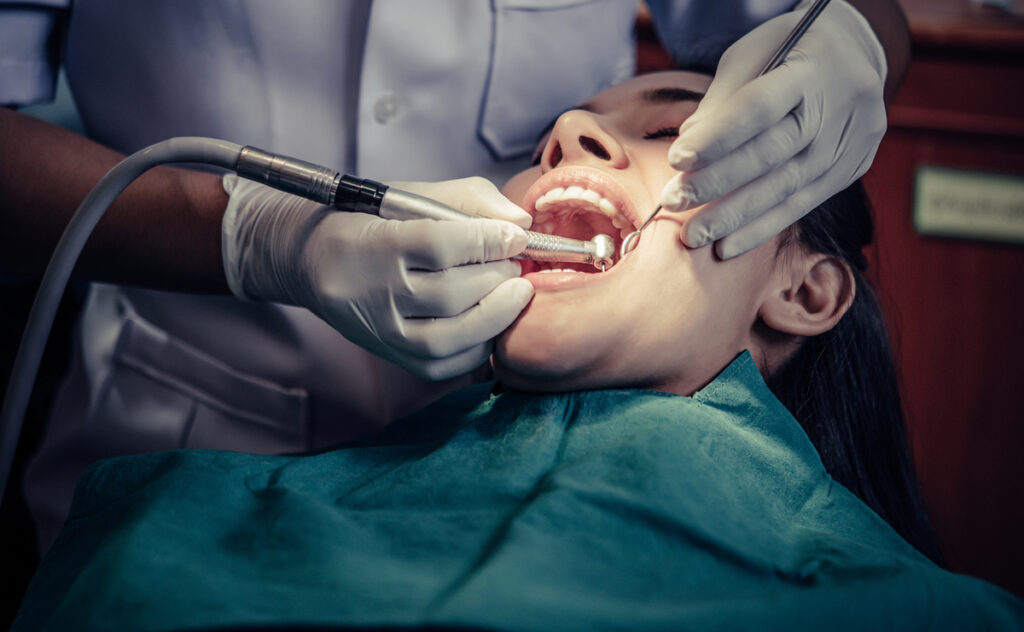
Types of Abutments
There are several types of abutments commonly used in dentistry:
Stock Abutments: These abutments are prefabricated and come in standard sizes and shapes. They offer a cost-effective option and are readily available for immediate use.
Custom Abutments: Custom abutments are specifically designed and fabricated to fit the unique anatomy of the patient’s mouth. They provide a more precise fit and can be customised to achieve optimal aesthetics and function.
Healing Abutments: Also known as temporary abutments, healing abutments are used during the healing phase after dental implant placement. They help shape the gum tissue and create an emergence profile for the final restoration.
Implant Abutments: These abutments are used with dental implants and are directly attached to the implant fixture. They provide a connection between the implant and the dental prosthesis.
Cement-Retained Abutments: Cement-retained abutments are commonly used in implant-supported crowns and bridges. They are secured to the implant with dental cement.
Screw-Retained Abutments: Screw-retained abutments utilize a screw to attach the abutment to the implant. This type of abutment allows for easy removal and maintenance of the dental prosthesis.
Materials Used
Traditionally, abutments were made of metals like titanium or gold due to their strength and biocompatibility. Titanium abutments are widely used in implant dentistry due to their excellent osseointegration properties, which allow them to fuse with the surrounding bone tissue. Gold abutments are less common nowadays but were preferred in the past due to their corrosion resistance and ease of manipulation.
With advancements in dental technology, there are now more options available for abutment materials. Zirconia is a popular choice for patients seeking a natural tooth-colored restoration, as it provides excellent aesthetics. Zirconia abutments offer good strength and biocompatibility, although they may not integrate with bone as effectively as titanium.
Another material gaining popularity for abutments is lithium disilicate, a type of glass-ceramic. It combines strength and aesthetics, making it suitable for both anterior and posterior restorations. Lithium disilicate abutments can be customized to match the surrounding teeth, providing a seamless and natural appearance.
Placement Procedure
The placement procedure for an abutment involves the following steps:
Evaluation and planning: The dentist evaluates the healing process of the implant site and confirms the readiness for abutment placement. They may take X-rays or use other imaging techniques to assess the position and stability of the implant.
Gingival healing: If necessary, the dentist ensures that the surrounding gum tissue has fully healed after the implant surgery. This may involve removing any temporary healing abutment or addressing any gum issues.
Abutment selection: The dentist selects an appropriate abutment based on factors such as the location of the implant, the desired esthetics, and the type of prosthesis that will be attached. Abutments come in various materials, including titanium, zirconia, and gold.
Abutment placement: The dentist carefully screws or cements the abutment onto the implant fixture. They ensure that the abutment is properly aligned and positioned for optimal function and esthetics. Temporary abutments may be used during the healing phase if necessary.
Impression taking: Once the abutment is in place, an impression of the abutment and surrounding teeth is taken. This impression is used to fabricate a custom-made dental prosthesis that will fit precisely over the abutment.
Prosthesis placement: After the dental laboratory has fabricated the final prosthesis, it is checked for fit, esthetics, and proper occlusion. The prosthesis is then attached to the abutment, either by screw retention or cementation.
Follow-up and maintenance: Regular follow-up appointments are scheduled to monitor the health of the implant and surrounding tissues. Proper oral hygiene practices and maintenance visits are crucial to ensure the long-term success of the abutment and dental prosthesis.
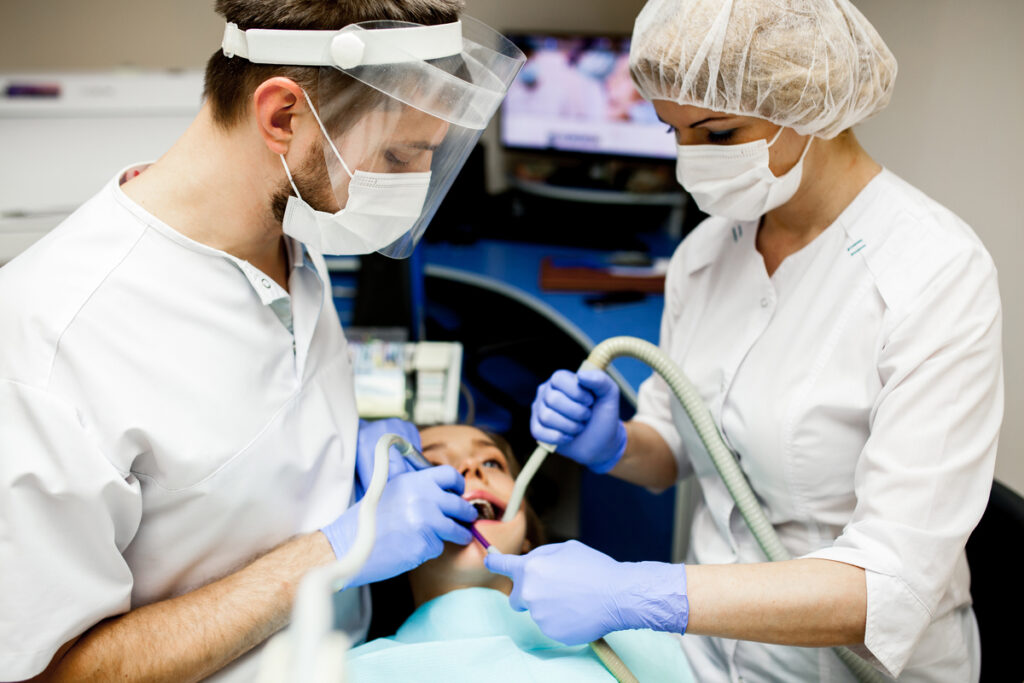
Factors Affecting Abutment Selection
Implant Position and Angulation: The location and alignment of the dental implant play a vital role in abutment selection. The abutment must be compatible with the implant system and should allow for proper alignment with adjacent teeth and the occlusal plane.
Soft Tissue Contours: The shape and contours of the surrounding soft tissues also influence abutment selection. The abutment should promote healthy gum tissue architecture and provide proper emergence profile to support the final restoration.
Esthetic Considerations: For anterior (front) teeth, esthetics are crucial. Factors like the color, shape, and translucency of the abutment should be considered to ensure a natural-looking final restoration.
Occlusal Forces and Function: The functional demands and occlusal forces exerted on the abutment play a role in determining its material and design. Factors such as the patient’s bite forces, parafunctional habits, and occlusal scheme need to be considered to select an abutment that can withstand the forces and maintain long-term stability.
Patient Factors: Individual patient characteristics, including oral hygiene, bone quality, oral habits, and overall health, need to be assessed. These factors may influence the choice of abutment material, design, and maintenance requirements.
Prosthetic Requirements: The type of final prosthesis, whether it’s a single crown, bridge, or denture, affects abutment selection. Factors such as retention, stability, and ease of fabrication of the prosthesis should be considered.
Maintenance and Care
Maintenance and care of an abutment in dentistry are essential for ensuring its long-term success and the overall health of the surrounding tissues. An abutment is a component used in dental implant treatments to connect the implant fixture to the dental prosthesis, such as a crown or bridge.
Proper maintenance of an abutment involves regular oral hygiene practices, including brushing and flossing. It is crucial to clean the abutment and the surrounding area thoroughly, as plaque and bacteria can accumulate, leading to gum disease and other complications. Using a soft-bristled toothbrush and a non-abrasive toothpaste, gently clean the abutment and the adjacent teeth, paying close attention to the gumline.
Dentists can evaluate the abutment’s condition, identify any signs of inflammation or infection, and provide professional cleaning to remove tartar buildup. They may also recommend specific oral hygiene aids, such as interdental brushes or antimicrobial mouth rinses, to maintain optimal oral health.
It is essential to avoid habits that can damage the abutment, such as chewing on hard objects or grinding teeth. If a dental prosthesis is attached to the abutment, it is crucial to follow any specific care instructions provided by the dentist or prosthodontist, such as avoiding sticky or hard foods that may stress the implant.
Restoration Options for Abutments
One common option for abutment restoration is a cement-retained restoration. In this approach, the abutment is prepared and shaped to fit the prosthetic crown, which is then cemented onto the abutment. This method offers a stable and aesthetic restoration, but it may require regular maintenance to monitor the integrity of the cement.
Another restoration option is a screw-retained restoration. With this technique, the prosthetic crown is secured to the abutment using a screw. This allows for easier removal and maintenance of the restoration if necessary. Screw-retained restorations provide good retention and stability, but they may require access holes in the prosthetic crown, which can impact aesthetics.
There are also customized abutments available for specific cases where the natural tooth contour is not ideal or when esthetics play a significant role. Custom abutments can be fabricated from various materials, such as zirconia or titanium, to ensure a precise fit and optimal aesthetics.
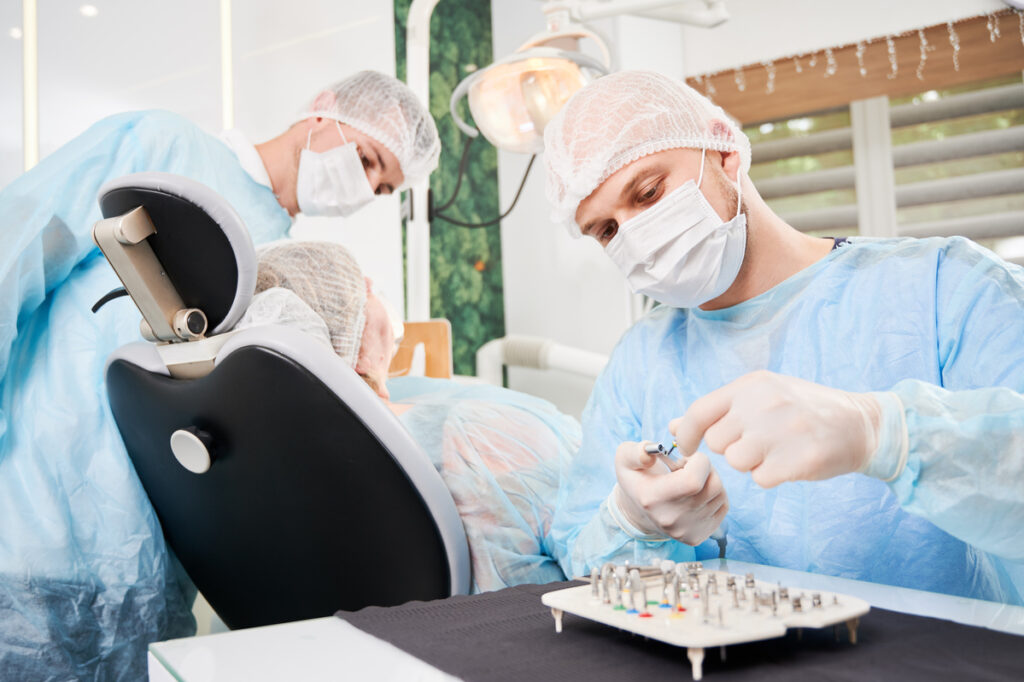
Common Abutment Complications
Understanding these common abutment complications is important for both dental professionals and patients.
Peri-implantitis: This is one of the most common abutment complications. Peri-implantitis is an inflammatory condition that affects the tissues surrounding dental implants, including the abutment. It is usually caused by poor oral hygiene, leading to the accumulation of plaque and bacteria around the implant site. If left untreated, peri-implantitis can result in bone loss and implant failure. Regular oral hygiene practices and professional cleanings are essential for preventing this complication.
Soft tissue problems: Sometimes, the soft tissues around the abutment may become inflamed or irritated. This can lead to discomfort, pain, and even gum recession. Inadequate adaptation of the abutment to the surrounding tissues or excessive pressure on the soft tissues can contribute to these problems. Careful placement and proper design of the abutment can help minimize soft tissue complications.
Loose abutment: Occasionally, an abutment may become loose, causing instability in the implant restoration. This can occur due to factors such as inadequate tightening during the initial placement or mechanical issues with the abutment itself. If a loose abutment is detected, it should be promptly addressed to prevent further complications and ensure the long-term success of the implant.
Esthetic concerns: Abutment complications can also manifest as esthetic issues. If the abutment does not blend seamlessly with the natural teeth or the final restoration, it can affect the overall appearance of the smile. This can be particularly problematic when the implant is in a visible area of the mouth. Proper selection of the abutment material, shape, and color can help achieve optimal esthetic outcomes.
Conclusion
An abutment in dentistry plays a crucial role in the success and longevity of dental prosthetics, particularly dental implants. This small but significant component serves as a connector between the implant fixture and the prosthetic crown, bridge, or denture, ensuring stability, function, and aesthetic appeal. Abutments are available in various materials, such as titanium, zirconia, and gold, each offering distinct advantages based on individual patient needs.
The primary function of an abutment is to provide a secure attachment point for the prosthetic restoration. Its design and placement are critical for achieving proper occlusion, alignment, and optimal esthetics. By offering stability and support, the abutment facilitates effective chewing, speaking, and overall oral function, enhancing the patient’s quality of life.
Moreover, abutments play a vital role in the long-term success of dental implants. They help distribute forces evenly across the implant, reducing the risk of mechanical failures and implant fracture. The abutment also acts as a barrier, protecting the underlying implant structure from bacterial infiltration and potential complications, such as peri-implantitis. Additionally, its shape and contour influence the preservation of soft tissues, contributing to the natural appearance of the prosthetic restoration.
Advancements in digital dentistry have revolutionized the design and fabrication of abutments. Computer-aided design and manufacturing (CAD/CAM) technology enable precise customization of abutments, ensuring an accurate fit and optimal esthetics. This digital approach streamlines the treatment process, reducing chair time and enhancing patient satisfaction.




